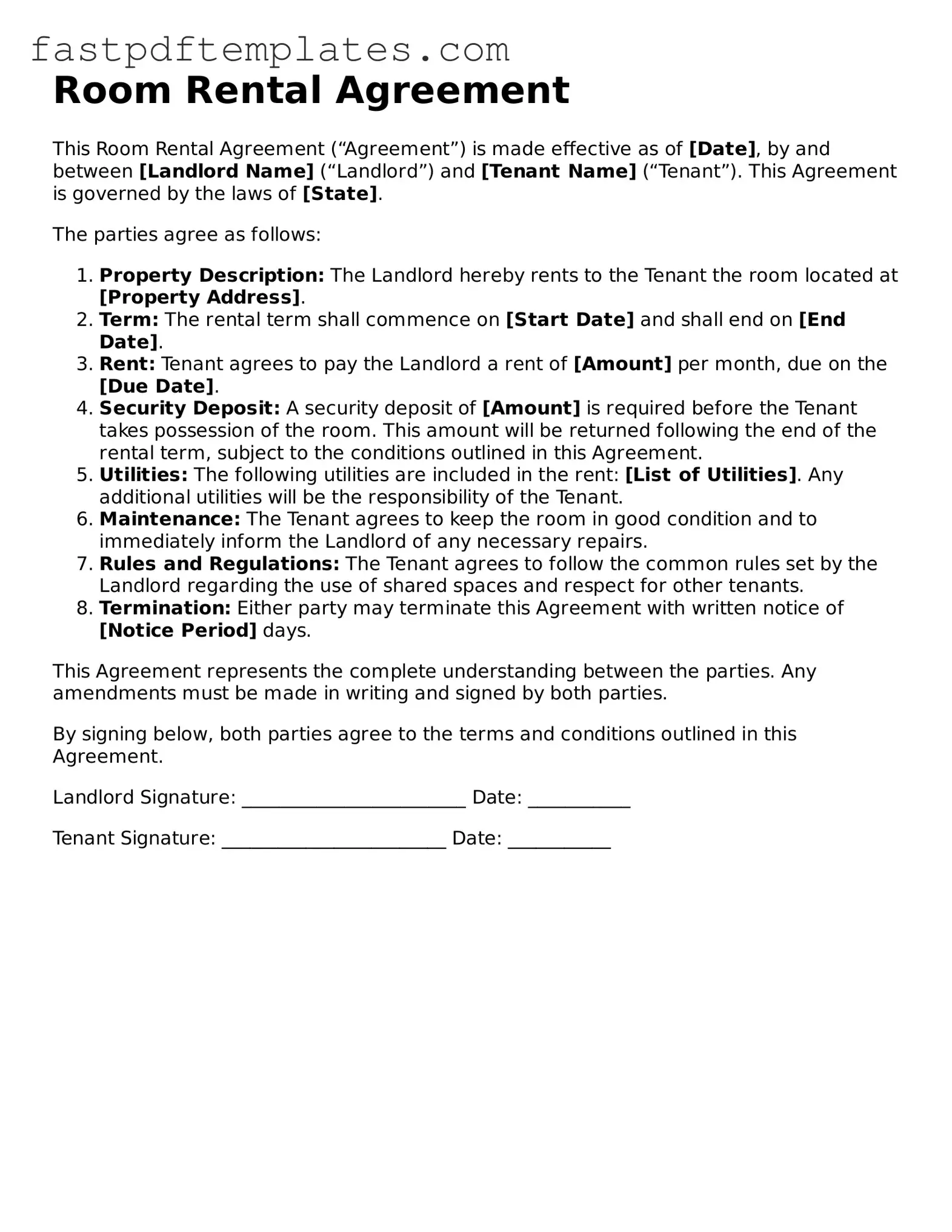The Lease Agreement is a legally binding document between a landlord and tenant, outlining the terms of renting a property. Like the Room Rental Agreement, it specifies the duration of the rental, payment terms, and responsibilities of both parties. Both documents serve to protect the rights of the landlord and tenant, ensuring clear communication regarding expectations and obligations during the rental period.
The Sublease Agreement allows a tenant to rent out their leased property to another individual. Similar to the Room Rental Agreement, it includes terms such as rent amount, duration, and responsibilities. This document requires the original landlord's consent, ensuring that all parties are aware of the arrangement and that obligations are upheld throughout the rental period.
The Rental Application is a document prospective tenants fill out to provide information about themselves to a landlord. This document, like the Room Rental Agreement, aims to facilitate the rental process by collecting necessary details such as employment history and references. Both documents are essential for establishing a formal rental relationship and ensuring that the landlord has the information needed to make informed decisions.
The Move-In Checklist is used to document the condition of the property before a tenant moves in. This checklist, similar to the Room Rental Agreement, helps prevent disputes over damages and responsibilities. It allows both the landlord and tenant to agree on the state of the property, ensuring transparency and accountability from the start of the rental period.
The Rental Receipt is issued by the landlord when a tenant makes a payment. This document serves as proof of payment, similar to the Room Rental Agreement, which outlines payment terms. Both documents are crucial for maintaining clear financial records and ensuring that both parties understand their financial obligations throughout the rental term.
The Eviction Notice is a document that informs a tenant of a breach of the rental agreement, typically related to non-payment or violation of terms. Like the Room Rental Agreement, it outlines the necessary steps and timelines for addressing issues. This document helps protect the landlord’s rights while providing the tenant with a clear understanding of the consequences of their actions.
The Pet Agreement is an addendum to a rental agreement that specifies the terms regarding pet ownership within the rental property. Similar to the Room Rental Agreement, it outlines responsibilities related to pet care, potential fees, and restrictions. This document ensures that both the landlord and tenant have a mutual understanding of pet-related policies, helping to maintain a harmonious living environment.
The Maintenance Request Form allows tenants to formally request repairs or maintenance within the rental property. Like the Room Rental Agreement, it establishes a clear communication channel between the tenant and landlord regarding property upkeep. This document ensures that maintenance issues are addressed promptly and that both parties understand their responsibilities in maintaining the property.
